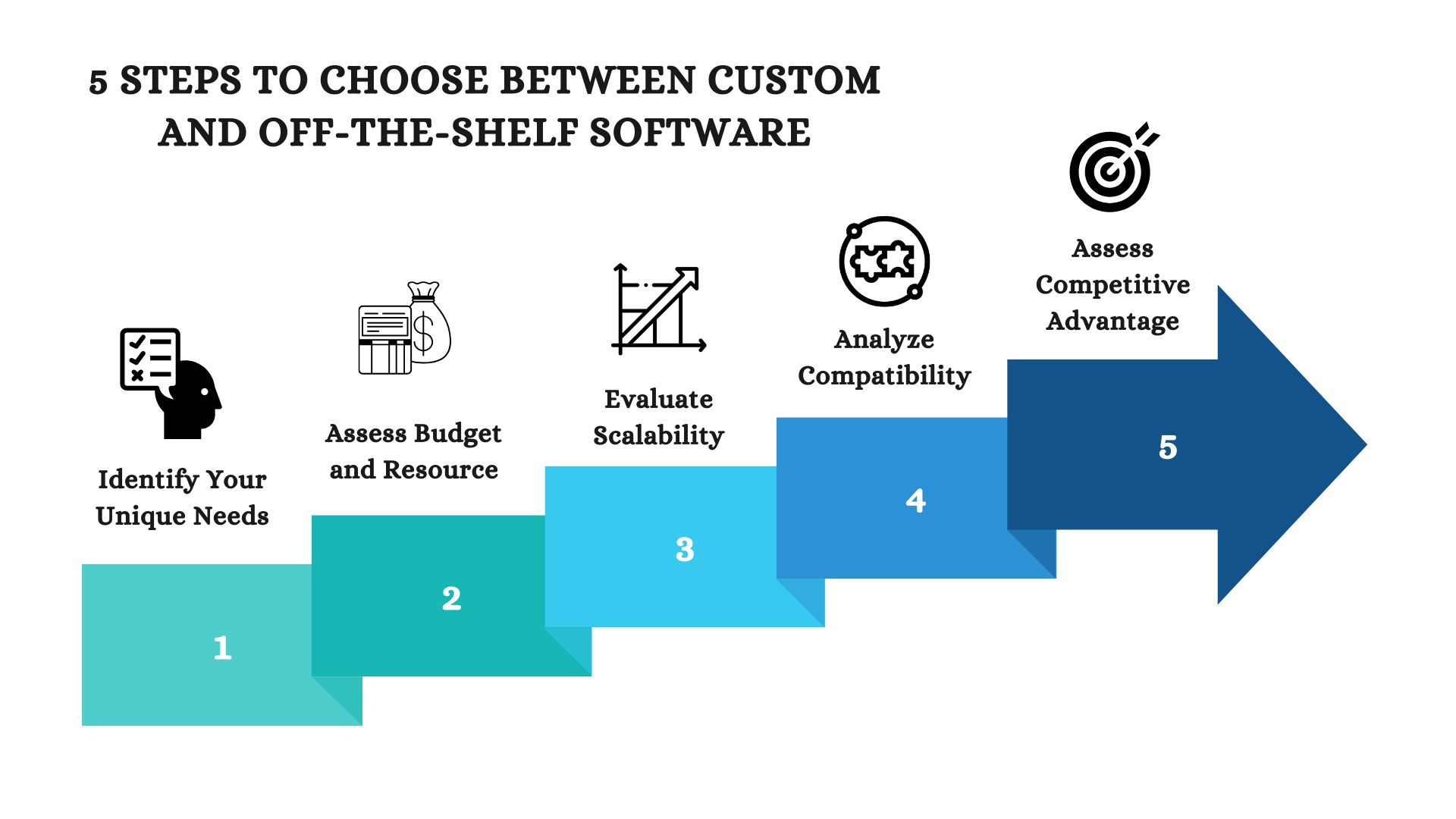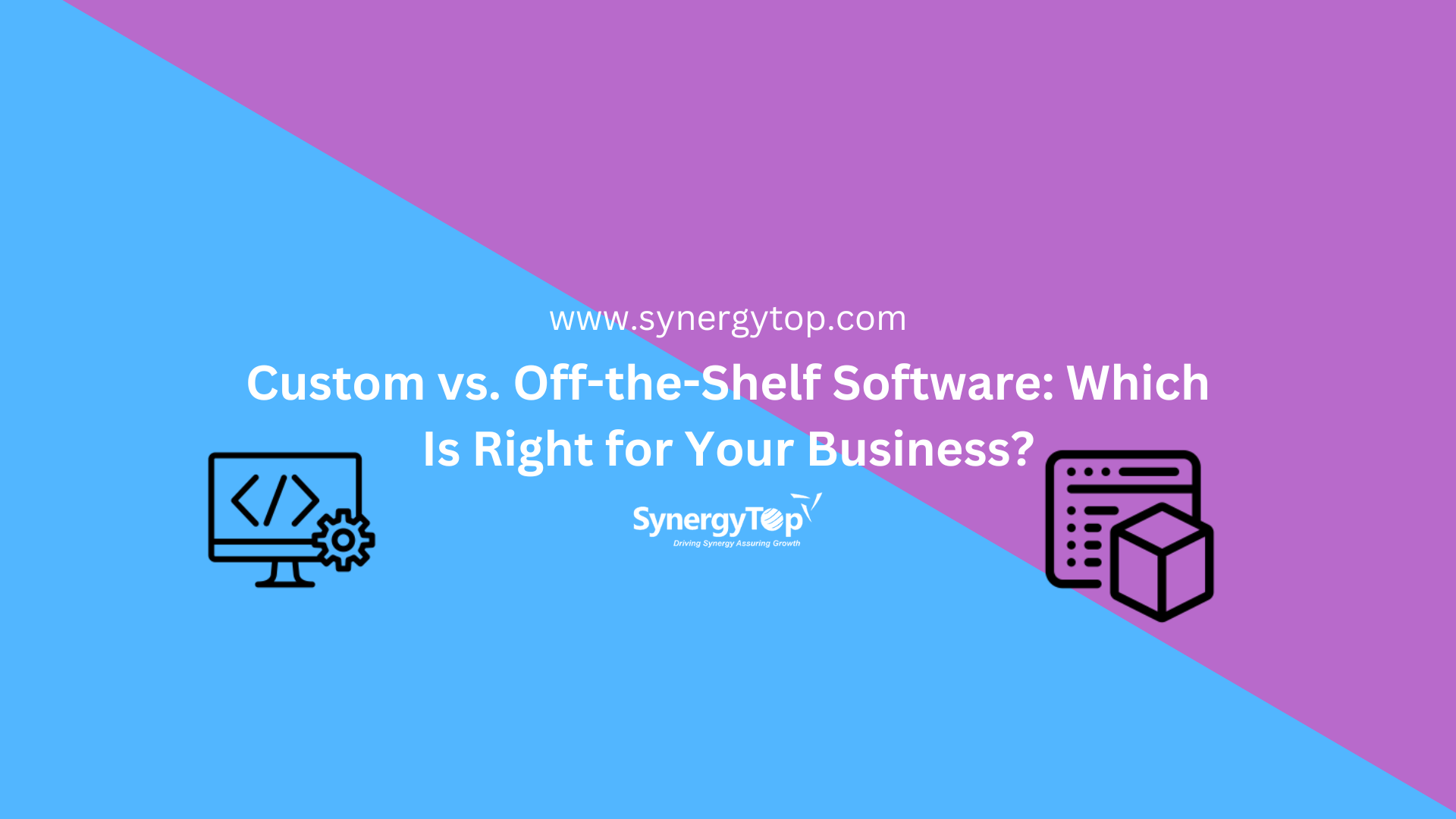There are billions of software solutions available in the market today.
No matter what you want to do or achieve, you have an off-the-shelf software to get it done.
And yet, the custom software development market is projected to reach $1,039 million by 2027.
So why is it so that even with billions of software, businesses are getting more software developed for their needs?
And that too when the cost of software development projects ranges from $3,000 to $150,000. Or even more for complex projects.
Are you at a similar crossroads? Wondering whether to embrace a one-size-fits-all solution or take the plunge into the world of custom software development?
Let’s delve into this conundrum and explore the nuances of custom and off-the-shelf software to help you make an informed choice.
In this blog, we will walk you through:
Custom Software: Tailored to Perfection
What is Custom Software?
Custom software, also known as bespoke software or tailor-made software, is a solution crafted to meet the specific needs and requirements of a single business or organization. It’s like a finely tailored suit that fits your business processes like a glove.
Key Features of Custom Software
- Uniqueness: Designed exclusively for your business.
- Scalability: Can be easily adapted and expanded as your business grows.
- Integration: Seamlessly integrates with existing systems.
- Full Control: You dictate the features, design, and functionality.
- Long-term Cost-Efficiency: A more substantial upfront investment, but often cost-effective in the long run.
Advantages and Disadvantages of Custom Software
| Advantages | Disadvantages |
| Tailored to Your Needs | Higher Initial Cost |
| Greater Flexibility | Longer Development Time |
| Competitive Advantage | Ongoing Maintenance Required |
| Enhanced Security | Dependent on Development Tea |
| Scalability and Future-Proofing | Potential Compatibility Issues |
Off-the-Shelf Software: The Convenience Choice
What is Off-the-Shelf Software?
Off-the-shelf software, also known as pre-packaged or commercial software, is a ready-made solution designed to cater to a broad audience. It’s like buying a suit off the rack—convenient but not tailored to your exact specifications.
Key Features of Off-the-Shelf Software
- Quick Deployment: Ready to use immediately.
- Lower Initial Cost: Typically cheaper upfront.
- Support and Updates: Regular updates and user support.
- Wide User Base: Tested and used by a large community.
- Minimal Development Time: No need for extensive coding.
Advantages and Disadvantages of Off-the-Shelf Software
| Advantages | Disadvantages |
| Lower Initial Cost | Limited Customization Options |
| Quick Deployment | May Require Workarounds |
| Regular Updates | Potential Feature Bloat |
| User Community Support | Competing with Other Businesses |
| No Development Overhead | Security and Data Privacy Risks |
Custom vs. Off-the-Shelf Software: A Comparative Overview
| Criteria | Custom Software | Off-the-Shelf Software |
| Customization | Highly customizable to your needs. | Limited customization options. |
| Initial Cost | Higher upfront investment. | Lower initial cost. |
| Time to Deployment | Longer development time. | Quick deployment. |
| Maintenance | Ongoing maintenance required. | Regular updates and user support. |
| Scalability | Easily scalable for future growth. | May have limitations for scalability. |
| Compatibility | Integrates seamlessly with systems. | Potential compatibility issues. |
| Uniqueness | Provides a competitive edge. | Common features shared with others. |
5 Steps to Choose Between Custom and Off-the-Shelf Software

Step 1: Identify Your Unique Needs:
- Start by conducting a comprehensive needs analysis. This involves consulting with different departments and stakeholders to create a detailed list of software requirements. Use surveys, interviews, and workflow analysis to gather insights.
- Prioritize your requirements based on importance and potential impact. This will help you distinguish between “must-have” and “nice-to-have” features.
- Consider any future needs and how the software should evolve to accommodate them.
Step 2: Assess Budget and Resources:
- Define a realistic budget for your software project. Consider not only the initial development costs but also ongoing maintenance, support, and potential upgrades.
- Evaluate your in-house resources and technical expertise. Determine if you have the necessary skills to manage and maintain custom software or if you would rely on an external development team.
- Explore funding options, such as grants or loans, if your budget is limited but custom software is the best fit.
Step 3: Evaluate Scalability:
- Examine your growth projections and consider how the software will scale as your business expands.
- Assess whether the custom software can accommodate changes in user volume, data, and functionality. Ensure it remains efficient and cost-effective in the long term.
- For off-the-shelf software, inquire about scalability features and limitations from the vendor.
Step 4: Analyze Compatibility:
- Document your existing software systems and infrastructure to understand how the new software will fit into your current environment.
- Ensure that the custom software is designed with compatibility in mind, and discuss integration capabilities with your development team.
- For off-the-shelf software, reach out to the vendor to clarify compatibility with your existing systems and inquire about any potential challenges.
Step 5: Assess Competitive Advantage:
- Research your competitors and industry to understand what features or functionalities could give you an edge.
- Create a comprehensive feature matrix that compares the features of custom and off-the-shelf software against your unique needs and competitive landscape.
- Consider the potential for innovation and how custom software can help you stand out in the market.
By following these detailed steps, you’ll gain a better understanding of your needs, budget, scalability requirements, compatibility issues, and competitive positioning. This information will significantly assist you in making an informed decision about whether custom or off-the-shelf software is the right choice for your business.
When to Choose Custom or Off-the-Shelf Software
Custom Software is Ideal When:
- Your business has unique and highly specific requirements.
- You require a competitive edge in your industry.
- Scalability and long-term efficiency are priorities.
Off-the-Shelf Software is Ideal When:
- Your budget is limited, and you need a cost-effective solution.
- You need a quick and straightforward deployment.
- The software’s features align closely with your needs.
Making The Final Choice
The choice between custom and off-the-shelf software is a pivotal decision for your business. It shapes the way you operate, adapt, and compete in the ever-evolving market.
You can just hit the market straight when you are going for off-the-shelf software solutions.
But when you opt for custom software, remember that the journey isn’t a solo venture. It’s a collaborative effort with a trusted custom software development company, a partner dedicated to ensuring your digital success.
At SynergyTop, we are well-equipped to help you achieve the desired results with your custom software solution.
As a reliable custom software development company, we have over a decade of experience and several successful custom software development projects in our portfolio.
Our experience helps us tailor our solutions to your unique business needs.
But it’s not just about tailored design; it’s about unleashing the full potential of your business. Here’s what we bring to the table as a custom software development company:
- Expertise: We have a team of seasoned professionals with expertise in various technologies and industries. They know how to turn your vision into reality.
- Efficiency: We can help streamline the development process, by anticipating & addressing potential roadblocks, saving you time and resources.
- Integration: Our team is not just adept at custom software development but also acquainted with off-the-shelf solutions. This allows seamless integration with your existing systems, preventing compatibility issues.
- Ongoing Support: As a reliable partner, we offer ongoing support, updates, and maintenance to keep your software in top shape.
So don’t wait, contact our custom software development experts to get started towards success.
Suggested Reading: React is one of the best technologies for custom software development due to its scalability, performance, and security features. Check out 3 reasons to use React for your next custom web development project.
















